
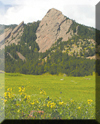
Geology highlights along the Ride The Rockies 2004 route.

This booklet focuses on acid rain and its impact on our Nation's capital. Rain in Washington, D.C., has an average acidity of 4.2,
about as acid as a carbonated drink and more than ten times as acid as clean, unpolluted rain. This booklet will define acid rain,
explain what effects it has on marble and limestone buildings, and show, on a walking tour, some of the places in our Nation's
capital where you can see the impact of acid precipitation.

The Southern Appalachian Mountain region is known worldwide for its great beauty and biological diversity. Why does this area have such beautiful scenery and such a diversity of plants and animals? How do the mountains, and the rocks and minerals of which they are made, affect the lives of people? How do people affect the mountains? To address these questions, we need to understand what took place millions of years ago and how these geologic events have influenced the landscape, climate, soils, and living things we see today.

The buildings of our Nation's Capital have been constructed with rocks from quarries throughout the United States and many distant lands. Each building shows important features of various stones and the geologic environment in which they were formed. This booklet describes the source and appearance of many of the stones used in building Washington, D.C. A map and a walking tour guide are included to help you discover Washington's building stones on your own.
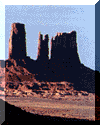
Approximately one-third of the Earth's land surface is desert, arid land with meager rainfall that
supports only sparse vegetation and a limited population of people and animals. Deserts--stark,
sometimes mysterious worlds--have been portrayed as fascinating environments of adventure
and exploration from narratives such as that of Lawrence of Arabia to movies such as "Dune."

Few subjects in the Earth sciences are as fascinating to the public as dinosaurs. The study of dinosaurs
stretches our imaginations, gives us new perspectives on time and space, and invites us to discover worlds
very different from our modern Earth.

One of the most frightening and destructive phenomena of nature is a severe earthquake and its terrible aftereffects. If the earthquake occurs in a populated area, it may cause many deaths and injuries and extensive property damage. Today we are challenging the assumption that earthquakes must present an uncontrollable and unpredictable hazard to life and property. Scientists have begun to estimate the locations and likelihoods of future damaging earthquakes. Sites of greatest hazard are being identified, and definite progress is being made in designing structures that will withstand the effects of earthquakes.
TEXT ONLY [NO GRAPHICS]
http://pubs.usgs.gov/gip/earthq1/earthqkgip.html
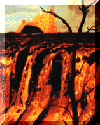
Viewing an erupting volcano is a memorable experience, one that has inspired fear, superstition, worship,
curiosity, and fascination throughout the history of mankind. In modern times, volcanic phenomena have attracted intense
scientific interest, because they provide the key to understanding processes that have created and shaped more than 80
percent of the Earth's surface. The active Hawaiian volcanoes have received special attention worldwide because of their
frequent spectacular eruptions, which can be viewed and studied with relative ease and safety.

May 18, 1980. On that fateful day, Mount St. Helens Volcano in Washington exploded violently after 2 months of intense
earthquake activity and intermittent, relatively weak eruptions, causing the worst volcanic disaster in the recorded history
of the United States. The cataclysmic eruption and related events on May 18 rank among the most significant geologic events
in the United States during the 20th century.

Fossils are the recognizable remains of past life on Earth and are fundamental to the geologic time scale. To tell the
age of most layered rocks, scientists study the fossils these rocks contain. Fossils provide important evidence to help
determine what happened in Earth history and when it happened.

An overview of the production of specific U.S. gemstones

Cape Cod, a sandy peninsula built mostly during the ice age, juts into the Atlantic Ocean like a crooked arm.
Geologists are interested in Cape Cod because it was formed, by glaciers, very recently in terms of geologic time
and because the shore is ever changing as the Cape adjusts to the rising sea.

Over millions of years, the Ocoee River has cut a steep, winding channel into a mountainside of hard rock. As you travel through the Ocoee River Gorge along US Highway 64 in the scenic Cherokee National Forest of southeastern Tennessee, take some time to look at the rocks along the way.
Companion brochure:
Geology of the Ocoee Whitewater Center, Cherokee National Forest
http://pubs.usgs.gov/gip/ocoee/
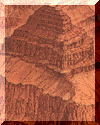
The Earth is very old -- 4.5 billion years or more -- according to recent estimates. This vast span of time,
called geologic time by earth scientists, is difficult to comprehend in the familiar time units of months and
years, or even centuries. How then do scientists reckon geologic time, and why do they believe the Earth is
so old? A great part of the secret of the Earth's age is locked up in its rocks, and our centuries-old search
for the key led to the beginning and nourished the growth of geologic science.

High levels of indoor radon are found in every state. We know from medical and environmental studies that radon can be a
health risk, primarily as a cause of lung cancer. Radon comes from the soil, rock, and water around us. Because levels of
radon vary from place to place, and because houses differ in their vulnerability to radon, it is important that all homes
be measured for radon. These pages present important geological information about radon; how it forms, the kinds of rocks and soils it comes from, and how it
moves through the ground or is carried by water into buildings, and explains the way geologists estimate the radon potential of an
area.

A glacier is a large mass of ice having its genesis on land and represents a multiyear surplus of snowfall over snowmelt. At the present time, perennial ice covers about 10 percent of the land areas of the Earth. Although glaciers are generally thought of as polar entities, they also are found in mountainous areas throughout the world, on all continents except Australia, and even at or near the Equator on high mountains in Africa and South America.

Travelers on Interstate Highway 81 can see remnants of the Ice Age on the mountains between Strasburg and Harrisonburg, Virginia. Scattered along the miles of green, forested mountains are many gray patches without any forests. These treeless patches, or openings, in the steep mountain forests are block fields -- geologic features that owe their origin to the Ice Age.

Through the ages, men and women have cherished gold, and many have had a compelling desire to amass great quantities of it -- so compelling a desire, in fact, that the frantic need to seek and hoard gold has been aptly named "gold fever." Gold was among the first metals to be mined because it commonly occurs in its native form -- that is, not combined with other elements -- because it is beautiful and imperishable, and because exquisite objects can be made from it.
TEXT ONLY [NO GRAPHICS]
http://pubs.usgs.gov/gip/prospect1/goldgip.html

The Great Ice Age, a recent chapter in the Earth's history, was a period of recurring widespread glaciations. Mountain glaciers formed on all continents, the icecaps of Antarctica and Greenland were more extensive and thicker than today, and vast glaciers, in places as much as several thousand feet thick, spread across North America and Eurasia.

Three centuries ago, Sir Isaac Newton determined that the average density of the Earth is twice that of surface rocks and that the Earth's interior therefore must be composed of much denser material. Our knowledge of what's inside the Earth has improved immensely since Newton's time, but his estimate of the density remains essentially unchanged. This brochure presents current information on what makes up the interior of our planet.

One of the most destructive volcanic eruptions in the history of Iceland began in the early morning of January 23,1973, near the country's premier fishing port, the town of Vestmannaeyjar, on Heimaey, the only inhabited isle in the Vestmannaeyjar volcanic archipelago. This booklet discusses the impact of the 1973 volcanic eruption of Eldfell on the island of Heimaey. Before the eruption was over, approximately one-third of the town of Vestmannaeyjer had been obliterated, but, more importantly, the potential damage probably was reduced by the spraying of seawater onto the advancing lava f!ows, causing them to be slowed, stopped, or diverted from the undamaged portion of the town.

Centuries ago, the Romans attributed volcanic and related phenomena (including earthquakes) mainly to the movement of wind
imprisoned inside the Earth rushing violently to the surface. Today, scientists know that volcanic eruptions occur when
buoyant magma (molten rock) that formed deep in the Earth ascends to the surface and ultimately is ejected upon release of
gas pressure. With precise instruments and refined data analysis, it is now possible to track the subsurface movements of
magma by monitoring the earthquakes and measuring the ground changes that accompany such movements.

Prehistoric, giant landslides in Montgomery and Craig Counties, Va., in the Blacksburg/Wythe Ranger Districts of the Jefferson National Forest, are the largest known landslides in eastern North America and are among the largest in the world. One of the landslides is more than 3 miles long! The ancient, giant landslides extend for more than 20 miles along the eastern slope of Sinking Creek Mountain. Enormous slabs of rock ranging from about 0.2 to more than 1.5 square miles in size broke loose and slid downslope under the influence of gravity. The movement of some slides may have been slow, but the movement of others was probably sudden and catastrophic.
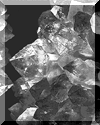
A natural gemstone is a mineral, stone, or organic matter that can be cut and polished or otherwise treated for use
as jewelry or other ornament. A precious gemstone has beauty, durability, and rarity, whereas a semiprecious gemstone
has only one or two of these qualities. A gem is a gemstone that has been cut and polished.

Where were the land areas and oceans of the North American Continent 1 million years ago, compared to their present locations? Was North America always about the same size and shape that it is today? To answer these questions, geologists must interpret the clues they find preserved in the rocks.

Scientists have learned that the Earth's crust is fractured into a series of "plates" that have been moving very slowly over the Earth's surface for millions of years. Two of these moving plates meet in western California; the boundary between them is the San Andreas fault.
TEXT ONLY [NO GRAPHICS]
http://pubs.usgs.gov/gip/earthq3/safaultgip.html
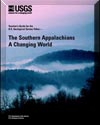
The video The Southern Appalachians: A Changing World describes the Southern Appalachian Mountains and how the geologic events that took place millions of years ago influenced the landscape, climate, soils, and living things that can be seen there today. Spanning a vast area from Virginia to Georgia, the Southern Appalachians are some of the oldest mountains on Earth. Molded and shaped over eons by volcanism, erosion, glaciation, and other geologic forces, these mountains are known worldwide for their unusual beauty and rich biological diversity. This teacher's guide summarizes the video and includes 17 suggested activities and discussion topics to enhance viewing.

The iron industry played a vital role in the industrialization of the United States and in the development of the U.S. economy and society. Much of the early history of the iron industry took place in Virginia. The remains of 11 iron furnaces and nearby mines in the George Washington and Jefferson National Forests in Virginia and West Virginia are silent reminders of a time when iron mines and furnaces operated along a belt that extended through the Appalachian Mountains from New York State to Alabama.
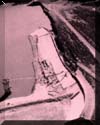
Earthquakes are the result of forces deep within the Earth's interior that continuously affect the surface of the Earth. The energy from these forces is stored in a variety of ways within the rocks. When this energy is released suddenly, for example by shearing movements along faults in the crust of the Earth, an earthquake results. The severity of an earthquake can be expressed in terms of both intensity and magnitude. However, the two terms are quite different, and they are often confused.
TEXT ONLY [NO GRAPHICS]
http://pubs.usgs.gov/gip/earthq4/severity_text.html

The eruptions of volcanoes often have direct, dramatic effects on the lives of people and on their property. People who live on or
near active volcanoes can benefit greatly from clear, scientific information about the volcanic and seismic hazards of the area. This
booklet provides such information for the residents of Hawaii so they may effectively deal with the special geologic hazards of the
island.

This booklet presents a generalized summary of the nature, workings, products, and hazards of the common types of volcanoes around the world, along with a brief introduction to the techniques of volcano monitoring and research.
TEXT ONLY [NO GRAPHICS]
http://pubs.usgs.gov/gip/volc/text.html

The United States ranks third, behind Indonesia and Japan, in the number of historically active volcanoes (that is, those for which we have written accounts of eruptions). In addition, about 10 percent of the more than 1,500 volcanoes that have erupted in the past 10,000 years are located in the United States. Most of these volcanoes are found in the Aleutian Islands, the Alaska Peninsula, the Hawaiian Islands, and the Cascade Range of the Pacific Northwest; the remainder are widely distributed in the western part of the Nation. A few U.S. volcanoes have produced some of the largest and most dangerous types of eruptions in this century, while several others have threatened to erupt.
TEXT ONLY [NO GRAPHICS]
http://pubs.usgs.gov/gip/volcus/ustext.html
Collecting Rocks
http://pubs.usgs.gov/gip/collect1/collectgip.html
The Earth is made of rock, from the tallest mountains to the floor of the deepest ocean. Thousands of different types of rocks and minerals have been found on Earth. By studying how rocks form and change, scientists have built a solid understanding of the Earth we live on and its long history.
Plain Geology
http://pubs.usgs.gov/gip/plain.html
More than 50 years ago former Director George Otis Smith recognized that scientific reports are often couched in words and phrases that are understandable only to other scientists, engineers, or technicians. His plea for "Plain Geology" was a classic, just as applicable now as it was in 1921. It is herewith reprinted to make it generally available.
Prospecting for Gold in the United States
http://pubs.usgs.gov/gip/prospect2/prospectgip.html
Anyone who pans for gold hopes to be rewarded by the glitter of colors in the fine material collected in the bottom of the pan. Although the exercise and outdoor activity experienced in prospecting are rewarding, there are few thrills comparable to finding gold. Even an assay report showing an appreciable content of gold in a sample obtained from a lode deposit is exciting. The would-be prospector hoping for financial gain, however, should carefully consider all the pertinent facts before deciding on a prospecting venture.
U.S. Department of the Interior, U.S. Geological Survey
URL: http://pubs.usgs.gov/products/books/gip.html
Maintained by Eastern Publications Group
Last modified: 10:16:53 Mon 30 Aug 2004
Privacy statement | General disclaimer | Accessibility